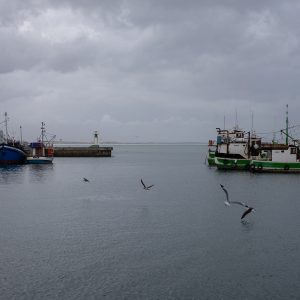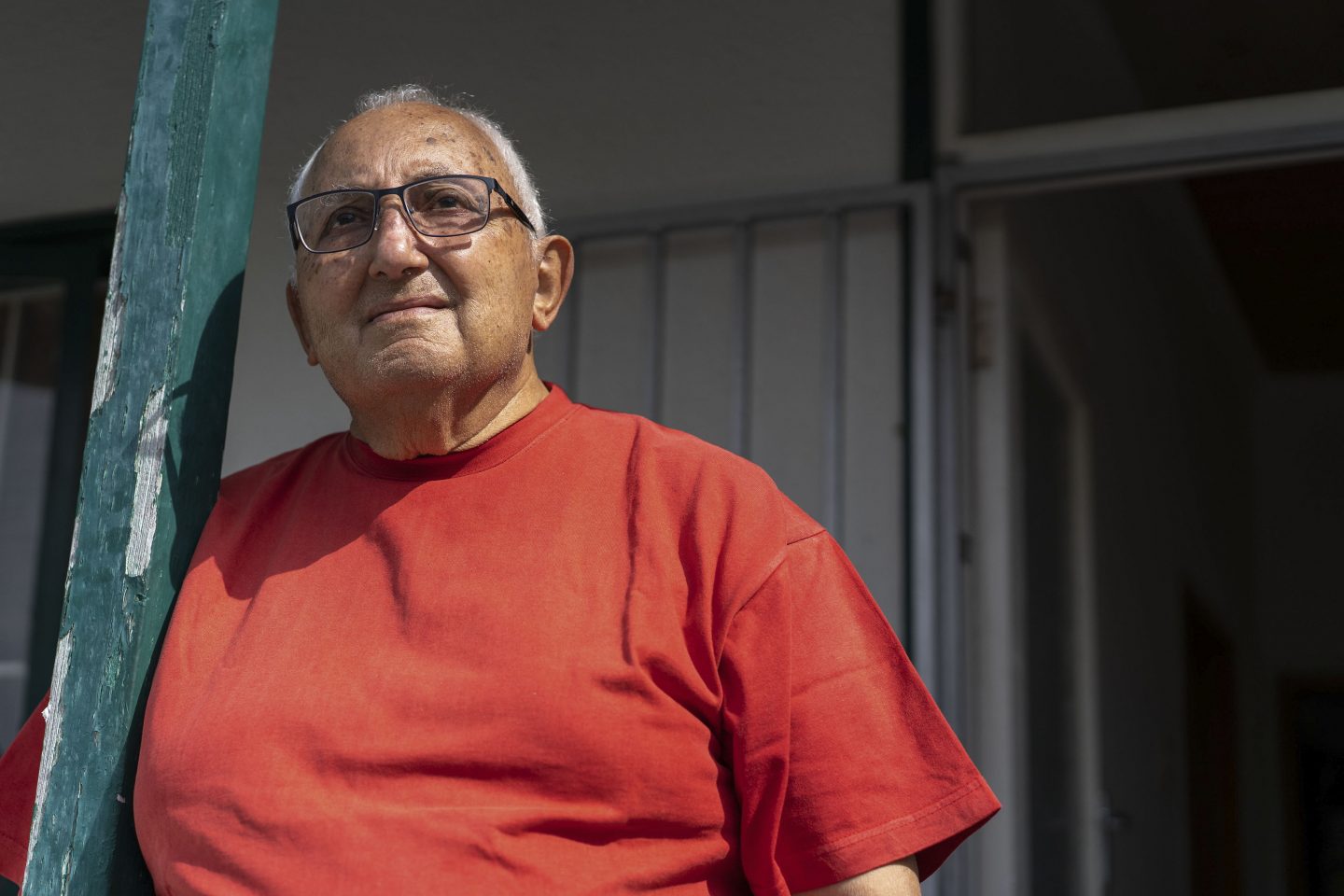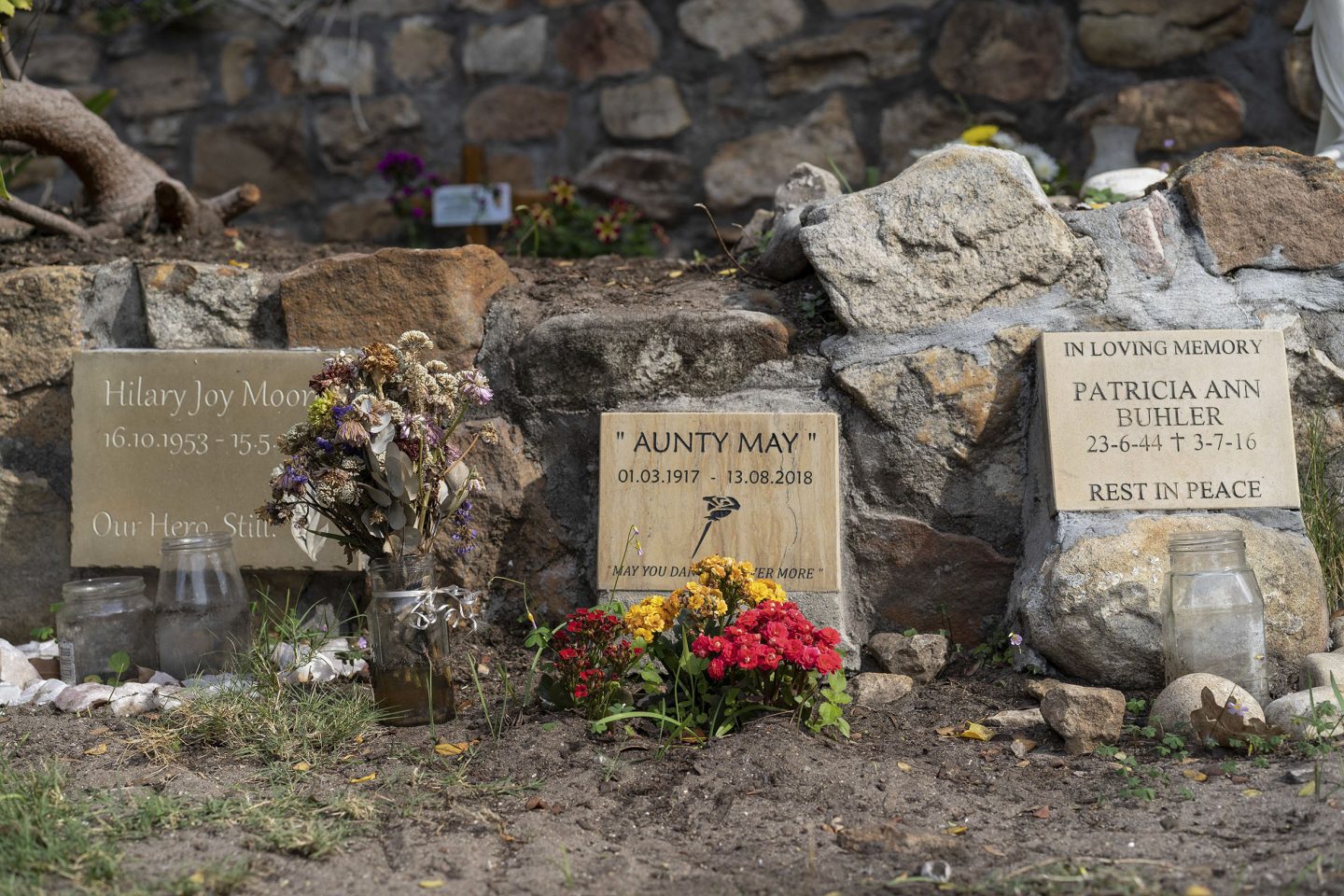Walking through Kalk Bay’s history
Artist and teacher Traci Kwaai tells the stories of the fishing community that has inhabited the area for generations, focusing on a history that is otherwise whitewashed.
Author:
23 April 2021
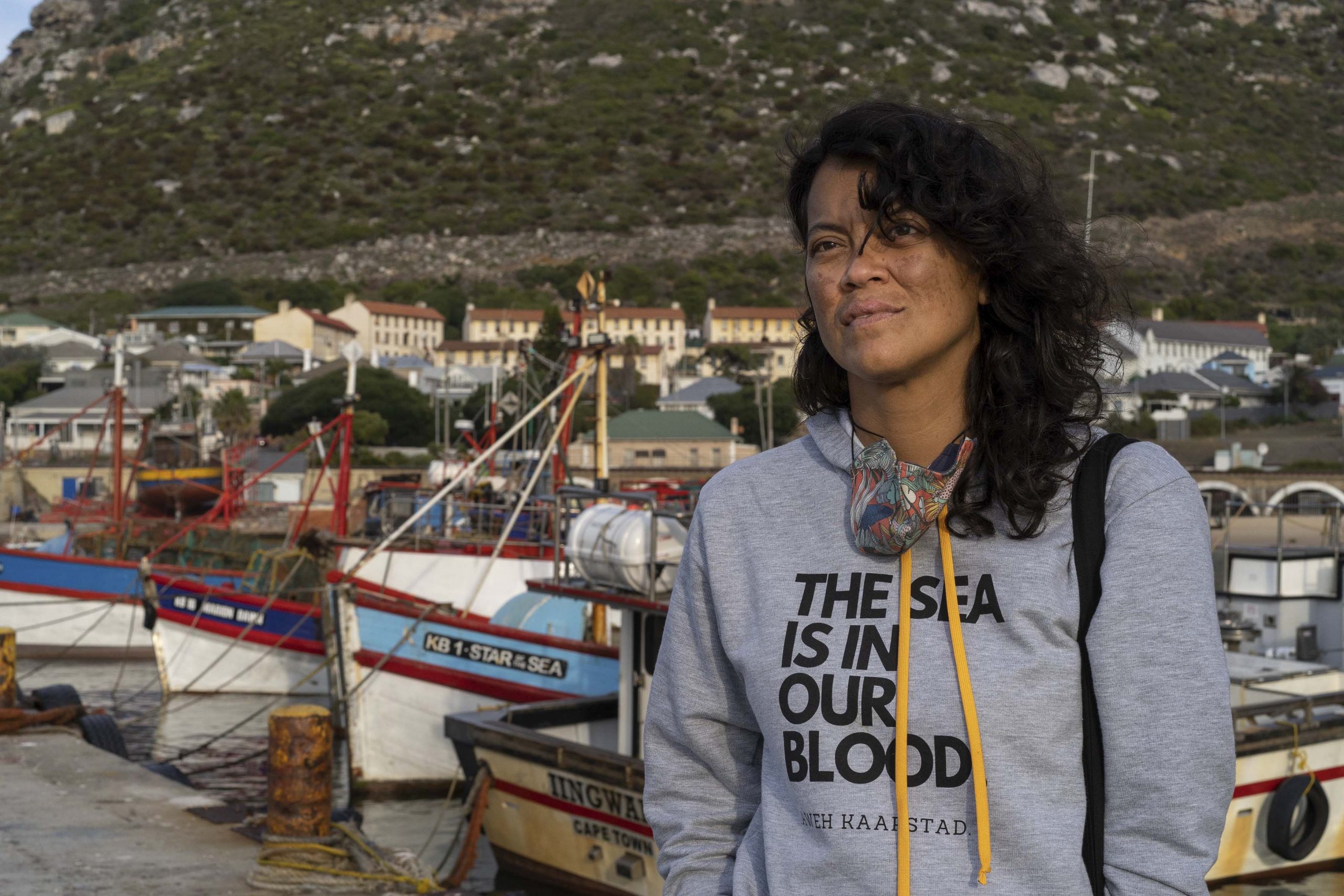
Traci Kwaai meets a tour group at the lighthouse on the edge of the Kalk Bay harbour. The panoramic view, cushioned by mountains and ocean, makes it the perfect vantage point.
The artist’s historic walking tour sheds light on the original history of the charming fishing town, Kalk Bay, on the False Bay coast of the Cape. Kalk Baai means “Lime Bay” in Dutch, referring to the mussel shells burned to make lime for construction.
Kwaai started the tours in mid-January this year, and has been running them every Sunday. She relies on them for income, alongside selling apparel and accessories that tell a story, from her brand Aweh Kaapstad. Her T-shirts that read The Sea Is In Our Blood refer to the words spoken by the legendary late Kalk Bay fisherman Jacobus Alfred Poggenpoel as captured in the documentary Cosmopolitan Kalk Bay Fishers, in which he says, “All my family were fisherman … But before I became a fisherman I worked in the post office for about six years after school … but as they say, if the sea is in your blood, there’s nothing you can do, besides get back to the sea.”
As we sit, she discusses the area’s history in detail, only occasionally referring to small notes. We move through spatial and geographic history. She is a masterful storyteller. Her ancestry is intertwined with the history of Kalk Bay, “My great, great grandmother was baptised in the old Anglican chapel in 1856,” she says.
Countless voices have been silenced and written out of South Africa’s history books. Today, Kalk Bay is known for its picturesque scenery, sea views, cobblestone roads, boutique stores and million-rand properties. But this narrative is misleading. There are two stories that need retelling: one of the sea and fisherman, and the other of the politics of the land.
A fishers’ history
Fishing boats provide the backdrop of Kwaai’s storytelling, as fishermen head out to find their catch of the day. One of the skippers of the Marion Dawn greets her as he manoeuvres the boat out into the ocean. This is her cousin, she says. Kwaai grew up with many family members who were fishermen.
The fishing community is essential to Kalk Bay’s history, continuing traditions passed down over centuries. Fishermen from the Cape had their own particular style of skilled hand-line fishing. Those brought over as enslaved labourers, such as the Indonesians who arrived in the 17th century, were also skilled fishermen.
Related article:
The tour starts with old tales from the sea and moves to the present. For instance, the langanas (traders who bought the fish and sold them from their wagons) continue to trade today in the Cape where snoek is sold from the back of bakkies. Kwaai also speaks about an enduring fishing myth that hanging a seevarkie (boxfish) in one’s house will predict wind direction and rain, allowing fishermen to plan their trips.
“Do you know why they’re called Southern Right Whales?” Kwaai asks the tour group. “Because they were the right whale to hunt.” This whale species was nearly eliminated by the greed of the British and other settlers who moved through the region hunting whales between 1806 and 1850. Massive tubs sat on the beachfront in which whale blubber was processed.
The fish population in the bay has similarly been affected by overfishing. “You could catch cob and snoek and yellowtail in that harbour. You didn’t have to get onto a boat to catch fish,” Kwaai says. Now, local fishermen have to travel much farther out to fish, and new laws and quota restrictions further affect them. The dwindling marine life that has been almost entirely fished out of the bay shows the entwined effects of capitalism and colonialism. As Kwaai notes, the subsistence-fishing community would “catch only what they need”.

A spatial divide
Kalk Bay was first established around 1742 as a mini port for Dutch sailors. The town is divided into three areas: Die Land (with the Fisherman Flats on the mountain slopes), Middeldorp (the middle region) and Die Dam (an area bordered by affluent homes).
The book A Traditional Way of Life details the historic composition of the area. The San people were the original inhabitants. The first outsiders to arrive were Muslim slaves from Indonesia and Malaysia who were brought to the Cape by the Dutch East India Company in the 17th century. Following them were deserters from around the world who jumped ship. Later the British arrived and brought slaves. Many Spanish-speaking Filipinos also arrived around the 1850s and settled in the community.

The first and only mosque in the town, Masjid al Jamia, was established on Quarterdeck Road around 1846, led by a Javanese man named Imam Jalalodin. The original community of the area was predominantly Catholic, Anglican and Muslim, and intermarriage was common. Much of the area around Middeldorp and Die Dam were owned by wealthy British families.
Kalk Bay became a cosmopolitan hub as different people reached the port. Fresh water and abundant fish made it an attractive place for outsiders to settle. The fisher population grew to include Filipino, Portuguese, Indonesian, French, Spanish, Danish and British.
A great deal of imagination is required when trying to picture the original layout of the town. The combination of the railway arriving in 1883 and the harbour built in 1910 allowed for more development and travel to the region. Outsiders coming in to buy and develop property meant an increasing shortage of houses for the fishing community.

Large high-rise flats that form part of Die Land were the fishermen’s homes. Many of the same families still live there. Die Land is also exceptional because the people categorised by the apartheid government as coloured were allowed to remain in the area even under the Group Areas Act of the 1950s. They were given a 15-year respite since they had to be close to their boats.
Unusual too was that some of the white community, such as members of the ratepayer association and the Black Sash, supported the fishers’ bid to stay. Today the mixed-heritage community continues to fight for their land.
Die Land is where Kwaai grew up, and she takes us past her childhood home. These simple single-room apartments would be home to many family members. As the real estate value in the area increases, these families are threatened with displacement.
The Group Areas Act ensured that the rest of Kalk Bay was declared a whites-only area in 1967. Many of its original descendents who were not fishermen living in Die Land were forced to sell their homes and move to other designated areas in the Cape. The fishing community is the only one that remains intact. It stands defiant next to multimillion-rand properties.
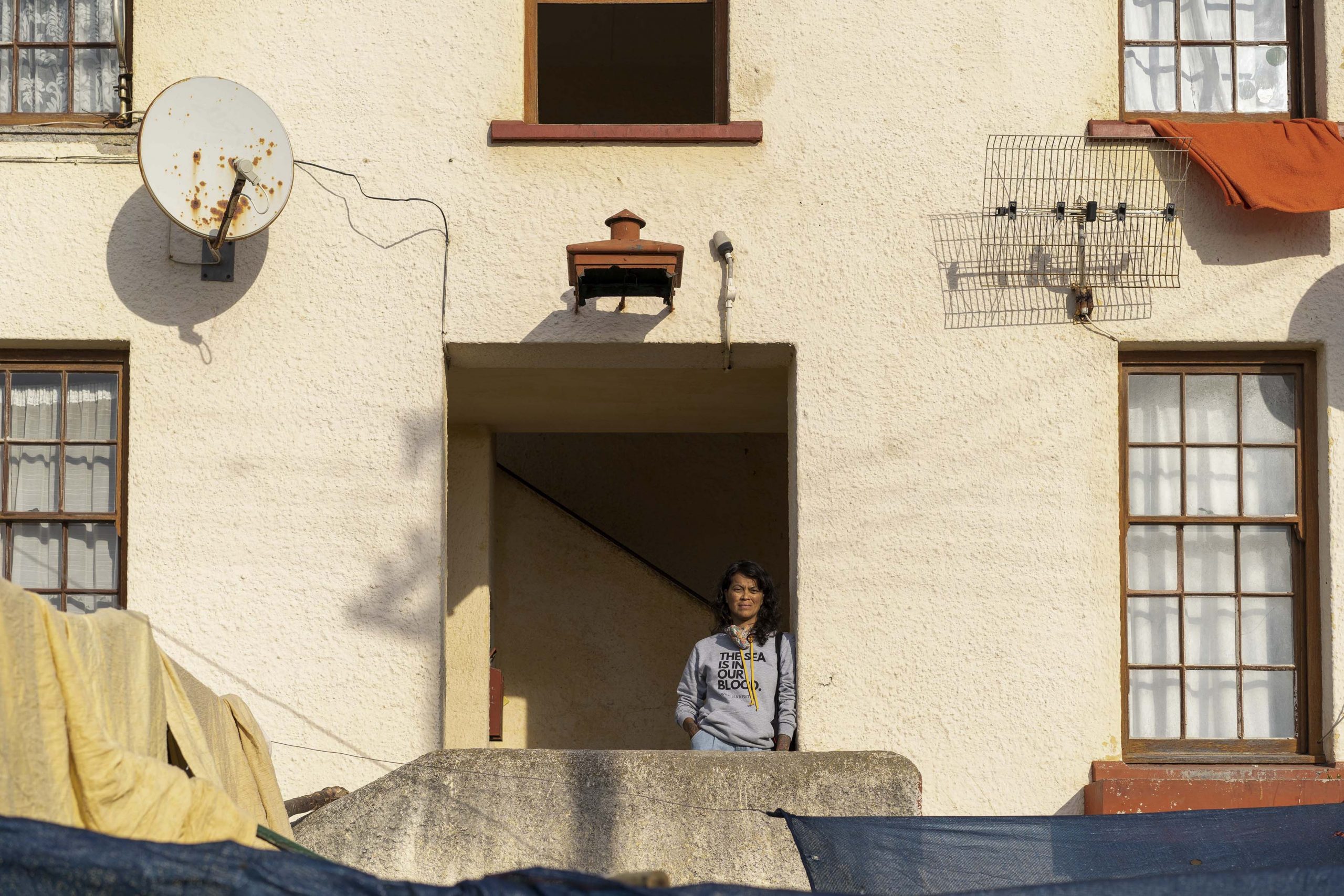
Community
A community ethos strengthened bonds among the fishermen of Die Land.
Large families with little money meant communal ties were built on a sense of sharing, blurring ethnic and religious barriers. Kwaai described having boeka (breaking fast) during Ramadan and celebrating with the traditional warm milk drink of boeber with her Muslim friends. The taste is palpable as she describes the drink.
“When there was no food in the house, my mother would put on her boots and go down to the rocks to pick alikreukel,” she says, describing a type of snail found on the rocks with which a stew could be made. “We only took what we needed,” she adds.
Every passerby seems to know her and greets her as they walk by. The tour is also a tribute to the elders of this diverse community. Many who knew the area’s history have since died. Kwaai often refers to a maternal family member who raised her called Aunty May, who was a central figure in the community. She lived to 101. She also tells a story about her great grandfather who was referred to as the octopus king for his ability to catch octopuses without using bait.
Kwaai knows the ancestry of all the families in the area, and she needs no prompting to break down an entire lineage. Among the original Filipino community who settled there was Nicholas (Klas) Menigo, who walked to the area from Simon’s Town. Kwaai mentions that his great grandson Neil Menigo is still around, living in the original family home. Later on during the tour we bump into him and he greets the group.
The tour includes a personal history that comes to represent Kalk Bay itself. Kwaai, who is also a teacher, emphasises giving a voice to the community’s stories. She spent a lot of time digging through archives to retell these narratives, centring silenced voices in a repressed history – as most of these stories about her community, she says, “have been told and written by white people”. Now, the tour allows for these old tales to be told with renewed passion and commitment.
-
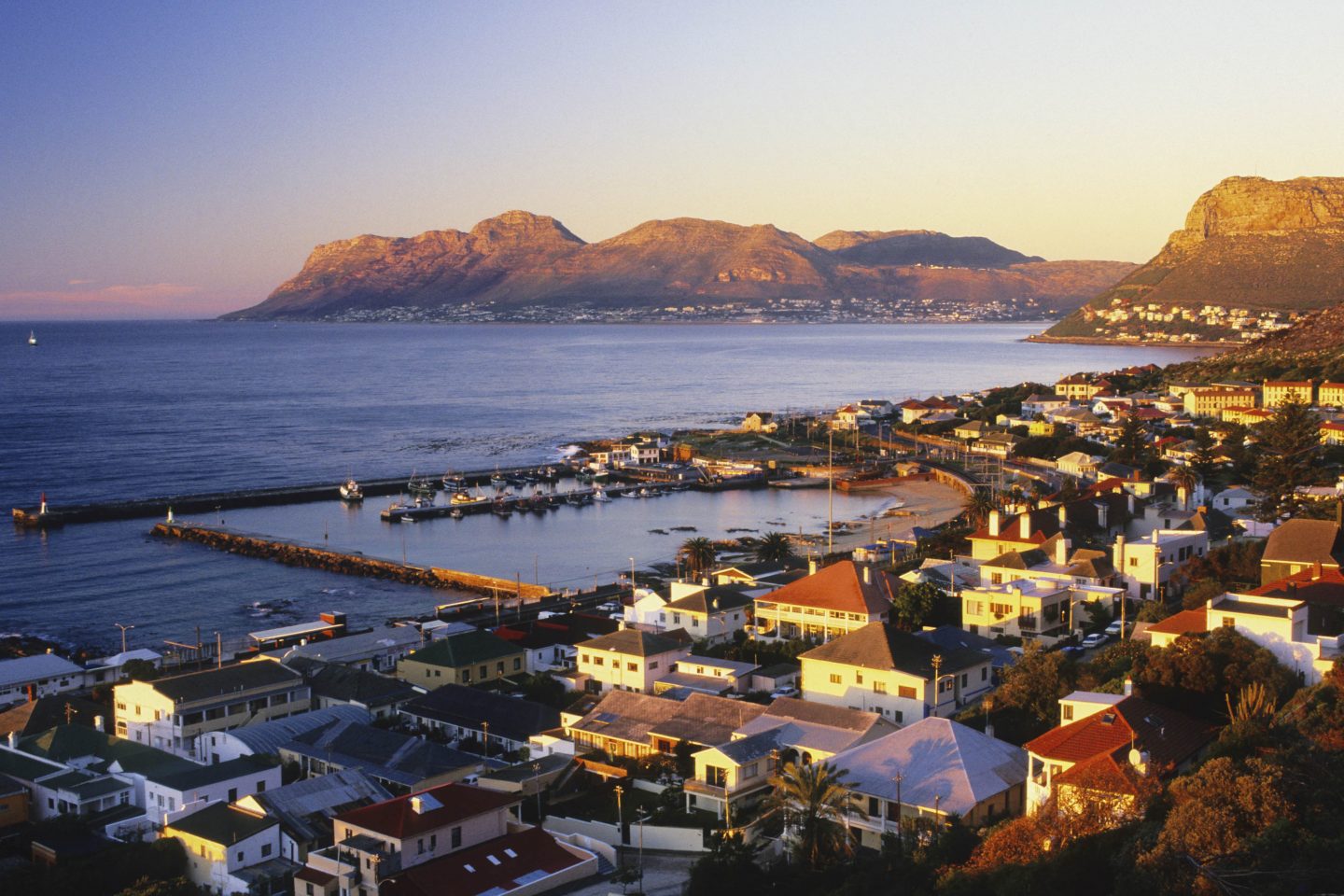
Kalk Bay is a fishing village on the coast of False Bay, South Africa and is now a suburb of greater Cape Town. It lies in a beautiful setting, wedged between the ocean and sharply rising mountainous heights that are buttressed by crags of grey sandstone.; Harbor scene at dawn, Kalk Bay, Peninsula, Western Cape, South Africa
For more information about the tour, see the link here.

